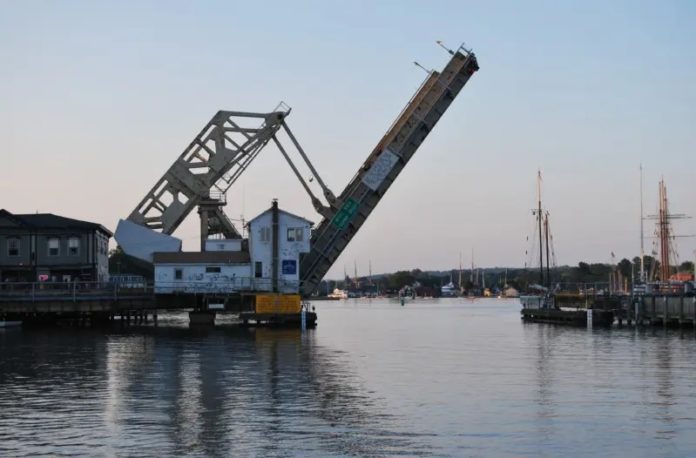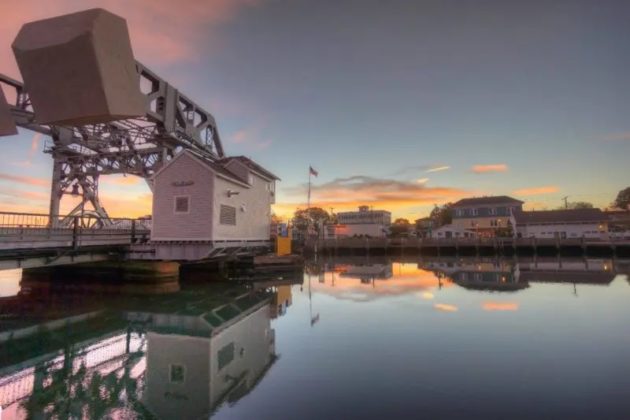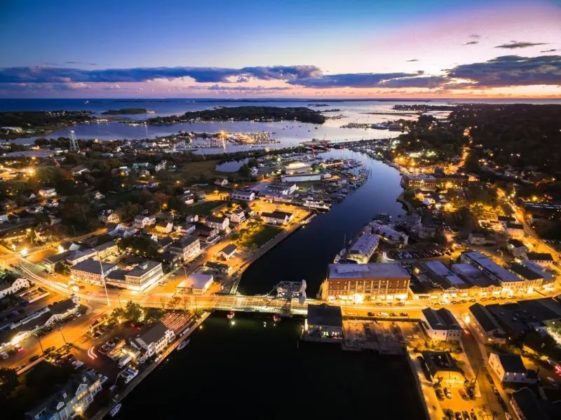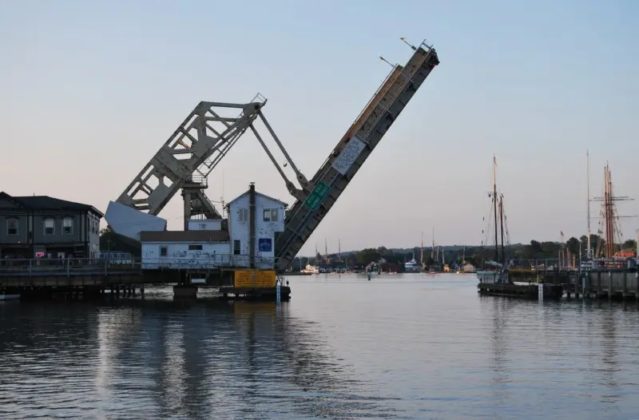Did You Know? Fun Facts About the Mystic River Bascule Bridge
The Mystic River Bascule Bridge (known to locals as the Mystic drawbridge) bisects downtown Mystic in two halves. Locals often find themselves vacillating between enjoying the beauty of the bridge and annoyance at the inconveniences it can cause when it goes up and stops traffic for a few minutes. You might find a new appreciation for it after reading a little more about its history and learning some fun facts about it.
The Strauss Heel-trunnion type bridge was designed by former Otis Elevator Company Chief Engineer Thomas Ellis Brown of New York and built in 1920 by the J. E. FitzGerald Construction Company of New London, Connecticut, according to its historical marker.
Its movable span is 85 feet (26 m) wide, 218 feet (66 m) long, weighs 660 short tons (589 long tons; 599 t), and employs two 230 short tons (205 long tons; 209 t) concrete-filled counterweights. Until 1928, the bridge carried streetcars of the Groton and Stonington Street Railway.
- It is operated by the Connecticut Department of Transportation and opens for approximately five minutes around 2,200 times per year, carrying an average daily traffic of 11,800.
- It is driven by two 1,400 pounds (640 kg) 40 horsepower (30 kW) direct current motors.
- Its span is greased and inspected every 100 openings or every two weeks during the winter.
- From May 1 to October 31, the bridge opens hourly during daylight at 40 minutes past the hour and on-demand. It usually raises to let sailboats and yachts pass under.
- The bascule bridge replaced a swing bridge and provided for a single-wide channel rather than two narrower channels with the ability to open the bridge only partially for smaller watercraft.
- The bridge is unique because all its mechanical parts are exposed, so it’s truly fascinating to watch in action. People strolling around downtown frequently stop to watch when the bridge moves up and down.
- Anyone can watch a live feed of the bridge here.















